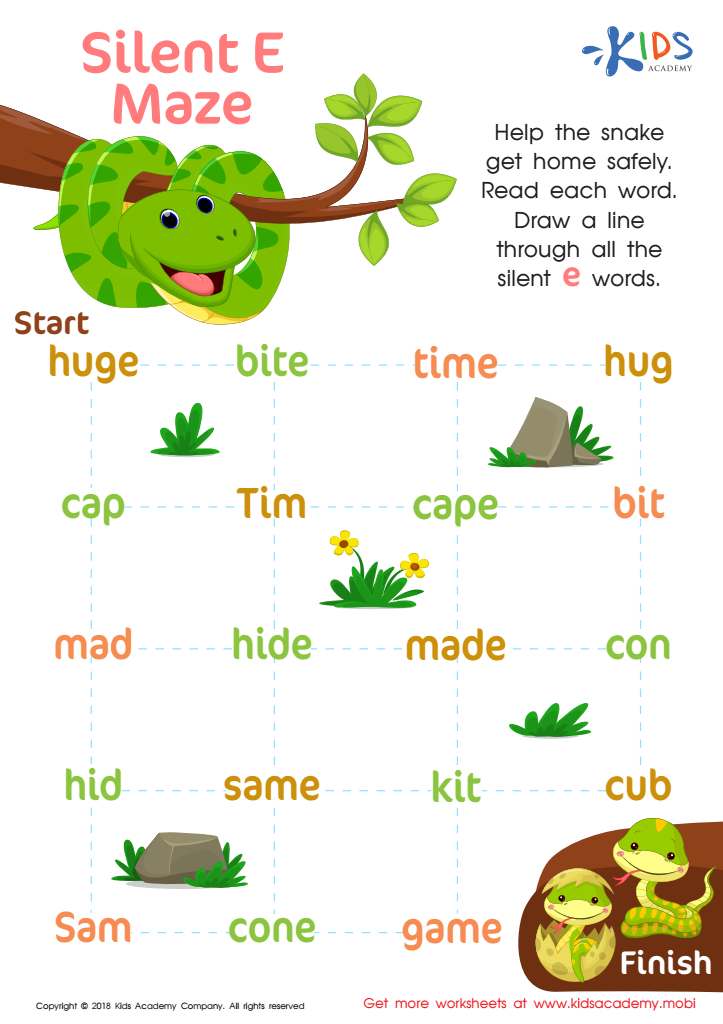Silent Vowels Worksheets for Ages 5-9
5 filtered results
-
From - To
Discover our engaging "Silent Vowels Worksheets for Ages 5-9", designed to support early readers in mastering silent vowels. These printable worksheets from Kids Academy offer fun and interactive activities that teach children to recognize and appropriately use silent vowels in common words. Ideal for kids aged 5 to 9, each worksheet includes clear instructions, appealing graphics, and exercises crafted to enhance reading fluency and pronunciation skills. Perfect for home or classroom use, these resources lay a solid foundation for language development through enjoyable practice. Help your child become a confident reader with our Silent Vowels Worksheets today!


Silent E Maze Worksheet


Is It Silent? Worksheet


Silent E Sentences Worksheet


Silent E Words Worksheet


Silent Letter Maze Worksheet
Silent vowels play a significant role in the early literacy development of children aged 5-9. Understanding silent vowels can greatly enhance young readers' phonemic awareness, spelling skills, and reading fluency.
Firstly, phonemic awareness, or the ability to hear and manipulate phonemes, is crucial for early reading success. Silent vowels, such as the 'e' in 'cake' or the second 'o' in 'people', help children understand that letters do not always directly correspond to every sound in a word. This awareness makes them better readers by tuning them into letter-sound relationships and exceptions.
Secondly, spelling improves when children grasp the concept of silent vowels. Knowing when and why certain vowels are silent helps children spell words correctly and recognize patterns in the language. For instance, understanding why there's a silent 'e' at the end of 'bake' but not 'back' helps avoid common spelling errors.
Lastly, reading fluency is enhanced as children become familiar with silent vowels. Encountering fewer decoding hurdles means smoother and more confident reading. This paves the way for improved comprehension since less cognitive effort is wasted on decoding.
Therefore, addressing silent vowels in early education equips children with essential literacy skills, setting a strong foundation for their futures in reading and writing.

 Assign to My Students
Assign to My Students















